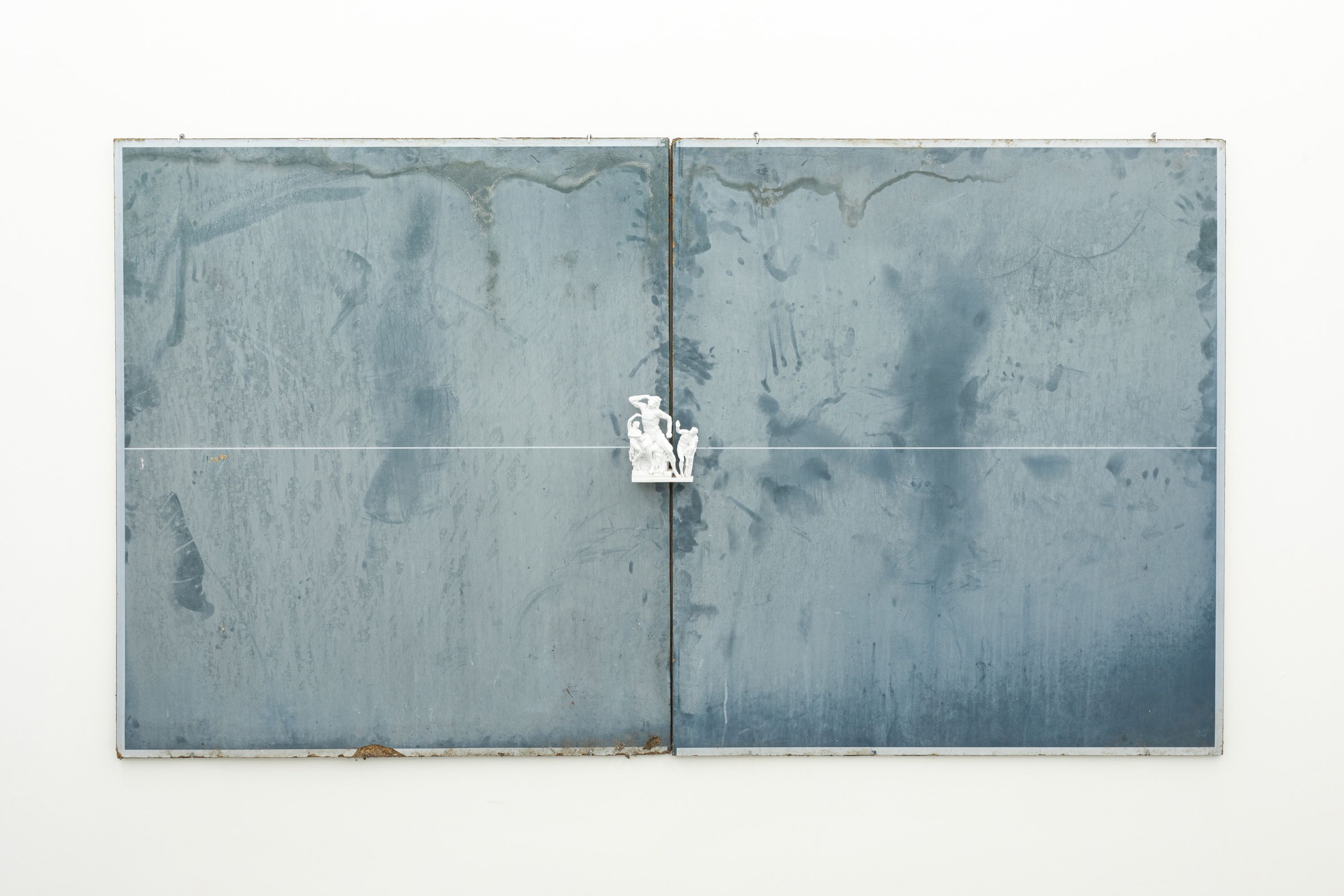Péter Szalay
Szalay 41
| Venue: | acb Attachment |
| Date: | Sep 16 – Oct 21, 2022 |
| Opening: | Sep 15, 2022, 18:00 |
Description
acb Attachment is opening the autumn season with a solo exhibition of Péter Szalay’s work in celebration of the artist’s 41st birthday. The artist’s fifth solo exhibition in collaboration with acb includes completely new works as well as reworked versions of some of his most emblematic pieces. In his exhibition, he combines the pessimism of our time with self-reflection on his age: the exhibition devotes special attention to the temporal dimension, the personal and collective experience of time, and the changes in the natural world caused by humans, or by their absence. In 2018, the artist and his family moved from Budapest to an island on the Danube, where he rediscovered freedom in village community instead of urban life, and in the quotidian proximity of nature instead of consumerism. Some of the works presented in the exhibition are based on the artist’s characteristic found-object-based work method.
Szalay’s gesture of recycling is enhanced by the inclusion of his earlier works. This time, he uses the spatial projections of the movement of the clockworks created for his previous exhibition at acb Gallery, which are based on mathematical forms ̶ such as the La Hire line or the Dürer folium ̶ , evincing Szalay’s technological imagination. The white 3D-printed sculptures based on these earlier works are transformed into a group of sculptures owing to the situation of their presentation (‘seated’ in or next to a hundred-year-old farmhouse chair), giving off an air of cosy contemplation owing to their anthropomorphic character, or reminiscent of a futuristic village museum as unknown objects left over from the past.
The work titled Footprints also makes use of the meaning-forming logic and technique of recycling. The installation is a series of samples, a chain of mechanical gestures building on each other. From the clay imprint of a sole (the first footprint), a positive sample (the second footprint) was made, which had already begun to shrink as it dried. The imprint made from this footprint also started to shrink as it dried, and so on through 13 steps. On account of the reduction in size resulting from the drying of the clay, the ‘building’ of the material on itself is thus in fact a process of decrease, which can, depending on the intensity of our pessimism, be described as a process of physical and mental decline, infantilisation, social regression or adaptation to ever smaller demands, and thus as an illustration of the way to resolve ecological burdens.
However, anti-heroism, retreat and minimalism are not only size-dependent: the very small works, such as the terracotta panels resembling naïve cave art as well as the huge sculpture entitled Do It Yourself in the courtyard of acb, all share these characteristics. The paraphrase of the Statue of Liberty is a solemn monument to the absence of humanity, and this is what links it to the works at the Attachment, where the absence of humanity, its march towards disappearance, is the leitmotif of the ensemble of objects. The monumentality of freedom is recoded by inventiveness and the airiness of the makeshift structure, rhyming with the ordinariness of the title and the freedom that is no longer an event but a technique of existence and everyday life: the potential for independence deriving from creation.
The beaver-gnawed log at the entrance to the Attachment is another non-human found object, which serves as a gigantic pedestal for the 3D bronze sculptures based on Szalay’s earlier mirrored porcelain figurines. Next to it is a wooden object, not beaver-, but probably man-made: a bench on which we can sit and watch a turtle on its back, trying to recover its natural position. It may well be the World Turtle known from Hindu and Chinese mythologies and Native American cosmological stories, which carried the Earth on its shell before it heated up and set itself into a new orbit inside the Attachment’s plasterboard wall.
Péter Szalay (1981) graduated from the Faculty of Arts of the University of Pécs in 2008, and since the beginning of his career he has been experimenting with new technological solutions and new sculptural materials. The artist participated in the 3rd Moscow International Biennale For Young Art in 2012 as well as the Bookmarks exhibitions in 2013 and 2015. His works have been exhibited at the Hungarian National Gallery, Trafó Gallery, Karlin Studios in Prague and the Veszprém Castle Gallery. In addition to numerous private collections, his works can be found in the collections of the Ludwig Museum in Budapest and the Institute of Contemporary Art in Dunaújváros.

